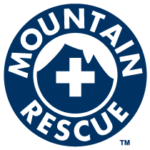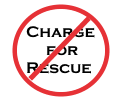If you are currently in an emergency situation and need help, please call 911.
The best tool needed for survival in the event you get lost outdoors is your skill of advanced planning. You must expect the unexpected and plan accordingly. Even if you are going out for just a few hours, pack enough essentials that you can stay hydrated, fueled, and prepared for any type of weather.
Your essentials should include at least:
- More than enough food and water for the activity you plan.
- A compass that you know how to use. You may want a GPS device, but those sometimes do not receive a signal or the battery fails. Cell phones also likely will not work because of a lack of signal.
- Appropriate maps. Study the terrain and your planned route. Know where you are going and how you will return.
- Sturdy hiking boots, clothes that you can layer depending on the weather conditions and additional socks in case the ones you are wearing get wet.
- A blanket, flashlight, matches kept in a water-resistant container, and other items that will help you survive overnight if necessary.
- Check with the local ranger district or forest office for special warnings, such as fires in the area, bear sightings, flooding, trail or road closures, etc.
It’s also important that once you have planned your outing, tell someone. Give them exact details of where you are going, the trail you plan to follow, when you will return, the vehicle you are driving (and where you plan to park) and how many people will go with you – do not go alone.
If you do become lost your most important tool is keeping a positive mental attitude.
Stop:
- As soon as you realize you may be lost: stop, stay calm, stay put. Panic is your greatest enemy.
Think:
- Go over in your mind how you got to where you are. What landmarks should you be able to see? Do not move at all until you have a specific reason to take a step.
Observe:
- Get out your compass and determine the directions based on where you are standing. Do not walk aimlessly.
- If you are on a trail, stay on it. All trails are marked with signs (where intersections meet) and with diamond blazers or markers. However, signs are sometimes vandalized or stolen.
- As a very last resort, follow a drainage or stream downhill. This is often a difficult path but could lead to a trail or road. Again, this could be very dangerous.
Plan:
- Based on your thinking and observations, come up with some possible plans, think them through then act on one of them.
- If you are not very, very confident in the route, then it’s always better to stay put.
- If it’s nightfall, you are injured or you are near exhaustion, stay in place.



